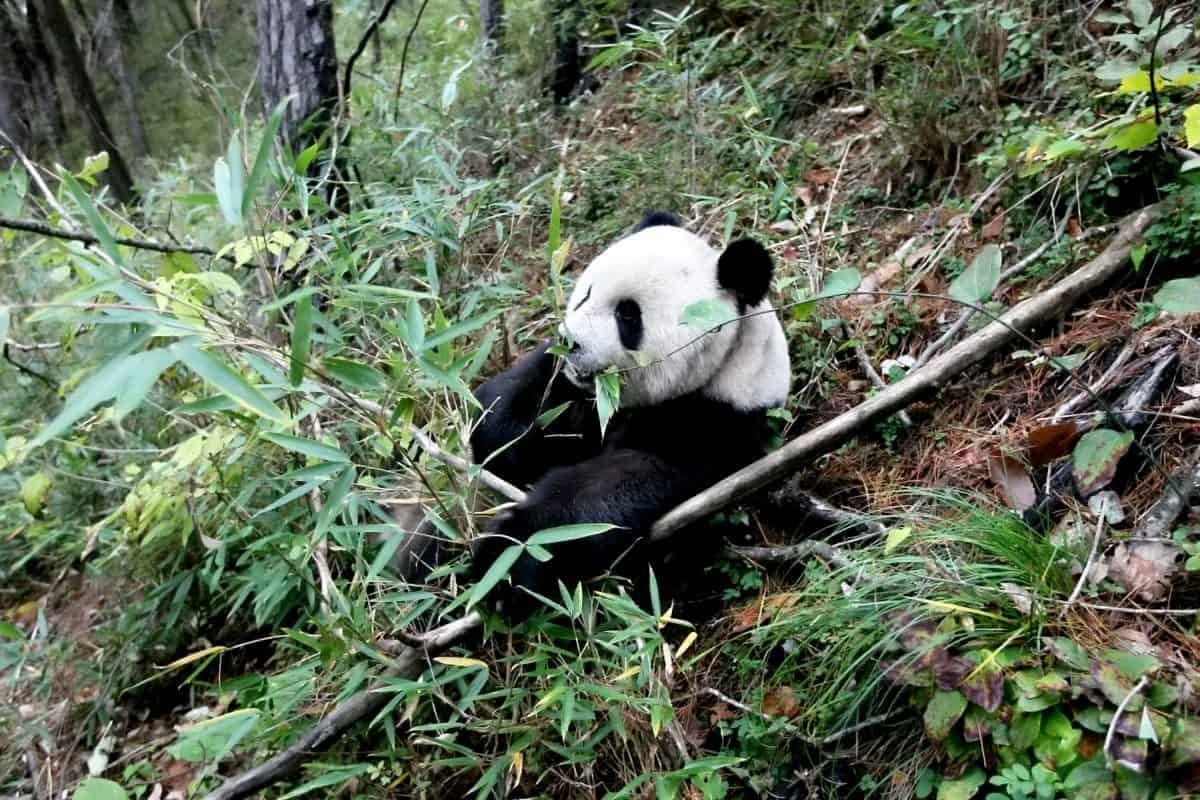Panda bears used to eat MEAT before becoming fussy veggies who only munch on bamboo.
It had been though pandas who live in the forested mountains of south western China have eaten just bamboo since they evolved because of their unique anatomical characteristics.
To be able to eat their exclusive diet of tough and fibrous bamboo diet, they have distinctive teeth, skull, and muscle characteristics along with a special pseudo-thumb, the better to grasp and hold bamboo stems, leaves, and shoots with.
But new evidence found extinct and ancient panda species most likely had a more varied and complex diet as their range was three times bigger than today’s pandas.
And they were “probably not exclusive bamboo feeders.”
Professor Fuwen Wei, of the Chinese Academy of Sciences, said: “It has been widely accepted that giant pandas have exclusively fed on bamboo for the last two million years
“Our results showed the opposite.”
Ancient pandas occupied different habitats over southern, central, and northwestern China that extended as far north as Beijing and as far south as Myanmar, northern Vietnam, Laos, and Thailand.
Modern pandas only occupy forest habitats in Sichuan, Shaanxi, and Gansu provinces in China.
Prof Wei added: “This suggests that ancient pandas might have a more complicated diet not comprising exclusively bamboo, and they probably adapted to a variety of habitat types other than the cool forests of modern pandas.”

To try and estimate exactly what extinct animals ate, researchers analysed the composition of stable isotopes in animal teeth, hair, and bones, including fossil remains.
These are different forms of the same element that contain equal numbers of protons but different numbers of neutrons.
In the new study, the researchers first analysed bone collagen of modern pandas (1970s to 2000s) and other mammals from the same mountains.
The stable isotopic composition of carbon and nitrogen from modern panda and other modern mammal bone samples indicated three obvious groups: carnivores, herbivores, and giant pandas.
The giant pandas were clearly unique, on account of their habit of eating bamboo.
Prof Wei’s team measured bone collagen isotopes of 12 ancient pandas collected from seven archaeological sites in southern and southwestern China and compared them to the patterns they observed in modern giant pandas.
That showed ancient and modern pandas are isotopically distinct from one another, suggesting differences in their dietary habits.
There was also more variation among ancient panda species, suggesting that the niche they occupied was about three times wider than that of modern pandas.
That is, ancient pandas most likely had a varied diet, similar to that of other mammalian species that lived alongside them.
The researchers suggest that pandas’ dietary habits have evolved in two phases.
First, the pandas went from being meat eaters or omnivores to becoming dedicated plant eaters.
Only later did they specialise on bamboo.
Prof Wei said: “The ancestral panda Ailurarctos lufengensis, excavated from the late Miocene, is thought to be carnivorous or omnivorous.
“Today, giant pandas exclusively consume bamboo and have distinctive tooth, skull, and muscle characteristics adapted to a tough and fibrous bamboo diet during their long evolution.
“A special feature, the pseudo-thumb,has evolved to permit the precise and efficient grasping of bamboo.
“Unlike those of extant pandas, little is known about the diet and habitat preferences of extinct pandas.
“Prevailing studies suggest that the panda shifted to specialised bamboo feeding in the Pleistocene , however, this remains questionable.
“Pandas now survive in a fraction of their historical habitat, but no specific information has been reported.
“Stable isotope analyses can be used to understand diet- and habitat-related changes in animals.
“Isotopic signals in bone collagen reflect dietary compositions of ancient human diets and dietary changes between historical and modern animal populations.
“Here,we conduct stable isotope analyses of bone and tooth samples from ancient and modern pandas and from sympatric fauna.
“We show that pandas have had a diet dominated by C3 resources overtime and space and that trophic niches of ancient and modern pandas are distinctly different.
“The isotopic trophic and ecological niche widths of ancient pandas are approximately three times larger than those of modern pandas, suggesting that ancient pandas possibly had more complex diets and habits than do their modern counterparts.
“Our findings provide insight into the dietary evolution and habitat contraction of pandas.”
The researchers say they would now like to figure out when exactly pandas shifted to the specialized diet they have today.
To find out, they plan to collect and study more panda samples from different historical times over the last 5,000 years.
The study was published in the journal Current Biology.
By Tony Whitfield

